HISPANICUM L., 1755
Synonyms :
Sedum andersonii G.Don (s.a.)
Sedum hispanicum var. hispanicum
Sedum hispanicum var. polypetalum Boissier (s.a.)
Sedum semiglabrum Boissier & Huet in sched. (s.a.)
Sedum glaucum Waldstein & Kitaibel (1805)
Sedum sexfidum M.Bieberstein (1808)
Sedum aristatum Tenore (1811)
Sedum heptapetalum Fisch. ex Hornemann (1813)
Sedum hungaricum Poiret (1816)
Sedum puberulum DC (1828)
Sedum guettardii Gmelin ex Koch (1837)
Sedum hispanicum var. buxbaumii Grisebach (1843) / Sedum glaucum var. buxbaumii (Grisebach) Hayek (s.a.)
Sedum orientale Boissier (1849)
Sedum armenum Boissier (1856)
Sedum glaucum var. leiocarpum Boissier (1872)
Sedum glanduloso-pubescens Feichtinger (1873)
Sedum pseudohispanicum Strobl (1884)
Sedum hispanicum var. eriocarpum Sommier & Levier (1900)
Sedum hispanicum var. leiocarpum Sommier & Levier (1900)
Sedum boissieri Davidov (1915)
Sedum hispanicum var. minus Praeger (1921)
Sedum hispanicum var. semiglabrum Fröderström (1932)
Sedum longibracteatum Fröderström (1960)
Sedum hispanicum var. planifolium Chamberlain (1972)
Sedum antiquum Omelczuk & Zaverucha (1978)
Sedum aytacianum J.Metzger, 1994
Distribution : Southern and central Europe, Balkan Peninsula, Turkey, northern Iran, Caucasus Region, Lebanon, Palaestina, naturalized in Japan.
Description (according to IHSP 2003) :
Simple or much-branched annual or perennial herbs, erect or ascending, sterile branches sometimes present, flowering branches 5 - 15 cm tall.
Leaves alternate, linear to oblong, semiterete or ± flat, 4 - 20 mm, glabrous or more rarely glandular-hairy, green or glaucous green.
Inflorescences lax to ± dense cymes, branches 2 - 4 with 1 - 8 flowers each, inflorescence axes glabrous or commonly glandular-pubescent towards the tip.
Flower 5- to 9- merous, subsessile, sepals ± 2 mm, acute, glandular-pubescent, petals white with pink mid-vein, 4 - 5 (- 7) mm, carpels glandular-pubescent or glabrous, white or pale-pink, stellate-spreading.
Cytology : 2n = 40
The variation presented by this common and wide-spread species is subtantial, and the patterns of distribution are incompletely understood.
See also : Sedum eriocarpum and S. pentapetalum
Ray Stephenson writes (Sedum, Cultivated Stonecrops, 1994, p. 108) : "The Sedum hispanicum complex of plants comprises S. hispanicum, S. rubens and S. pallidum but is in great need of expert attention to sort out the many anomalies and contradictions apparent in available literature."
Plantes en culture / plants in cultivation :
Clone 1 : collectage / collected by : Guiseppe Tavormina, Parco Appia antica, Rome, Italie, alt. 20 m
Plante en mars /Plant in March - vignette / insert : Plante en janvier / Plant in January :
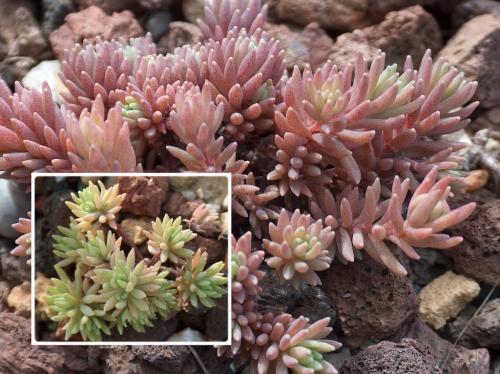
Plante en fleur fin avril. / Flowering plant at the end of April :
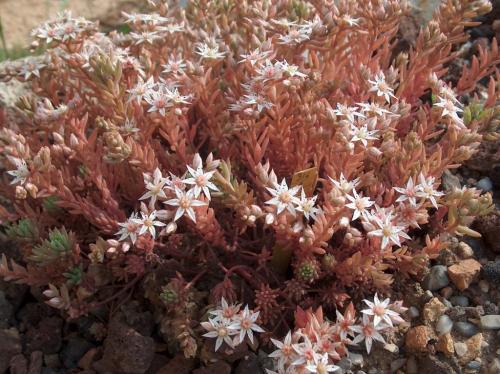
Clone 2 : collectage / collected by Nina Bjelovucic, Sucuraj, île de Hvar, Croatie, alt. 200 m sur terrain calcaire / on calcareous soil.
Plante en fleur au printemps / Flowering plant in spring :
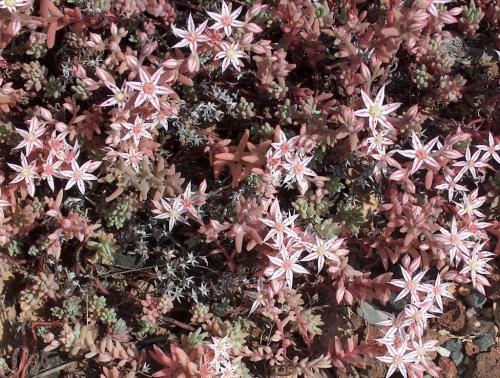
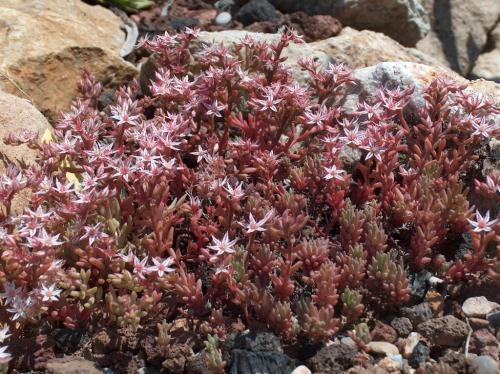
Clone 3 : reçu de / recieved from G. Tavormina (ex O.B. Sicile) (S. hispanicum var. eriocarpum).
Plante en avril / Plant in April :
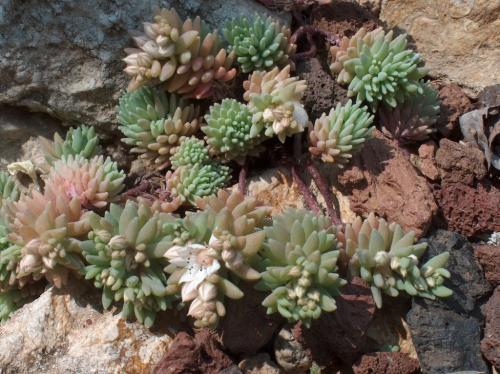
Plante en mai / Plant in May :
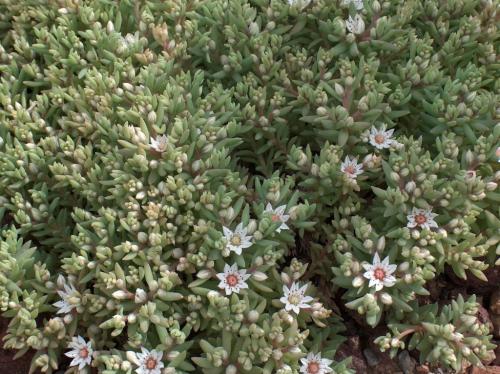
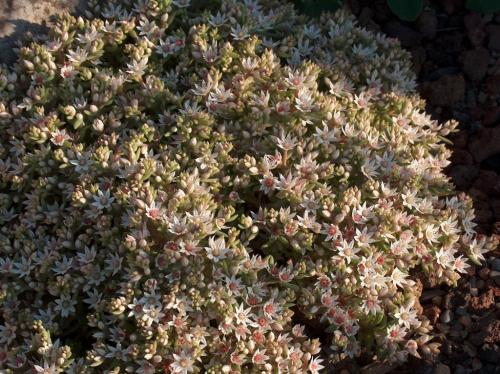
Plantes in situ : Croatia (photos Marko Doboš) Velički grad, Papuk mountain, Croatie alt. 452 m. Roches métamorphiques :
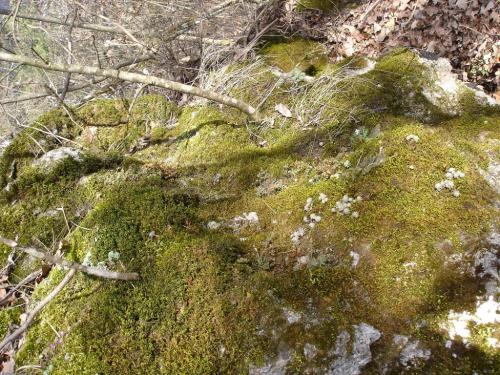
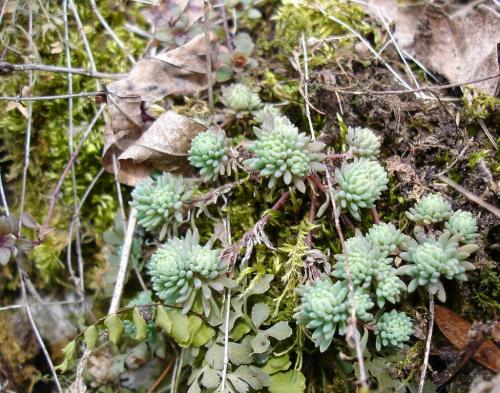
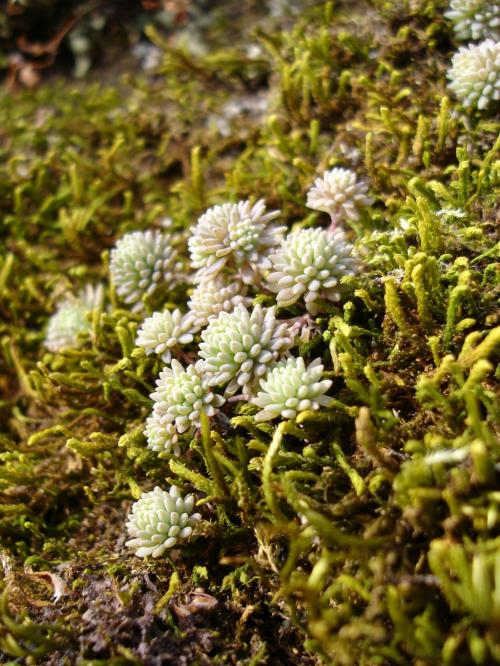
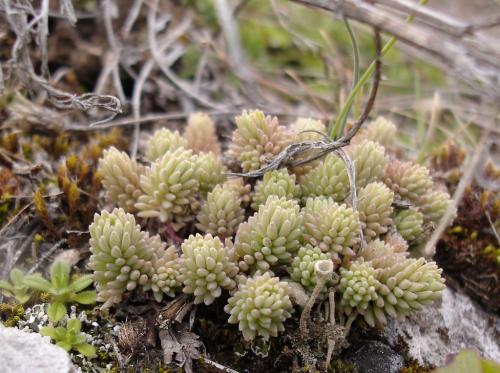
Sommet du / top of mont Papuk, alt. 940 m. Calcaire triasique :
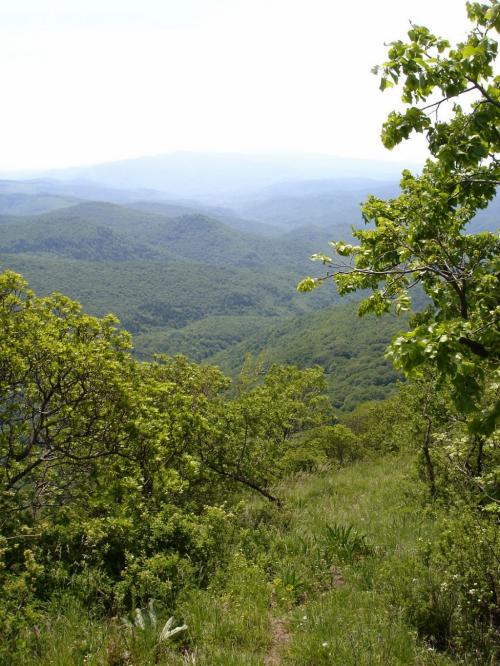
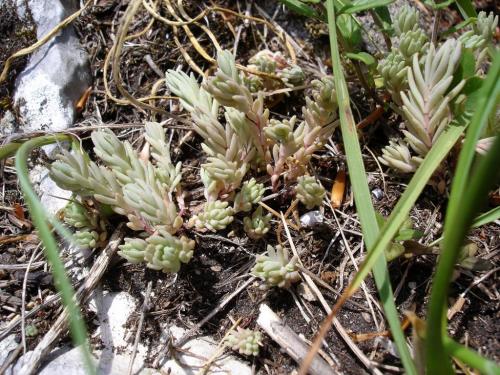
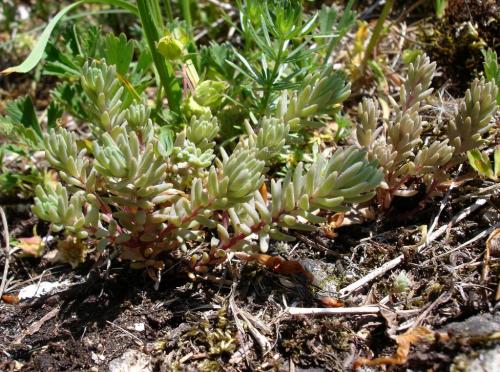
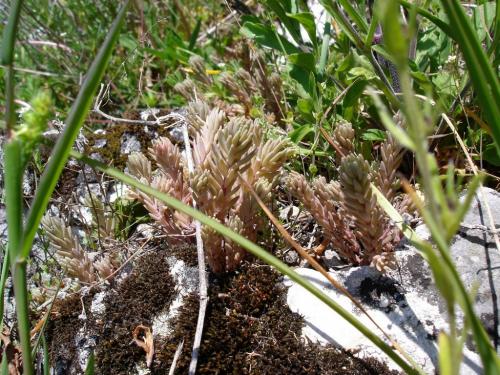
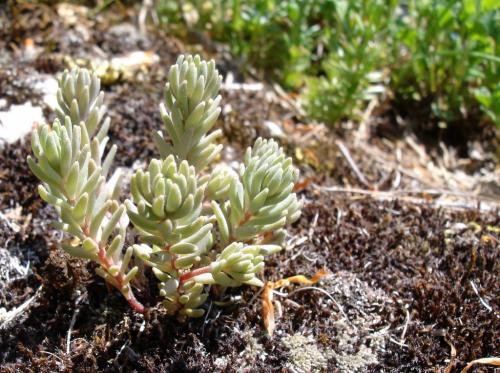
Sedum hispanicum is widespread in Anatolia. It is also extremely variable. In the valley of Sumela and Masca plants are glabrous. Jean Metzger named them S. aytacianum.
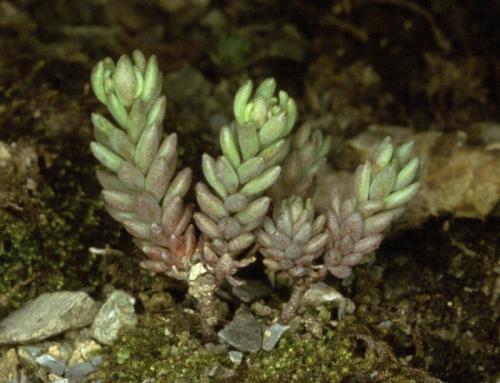
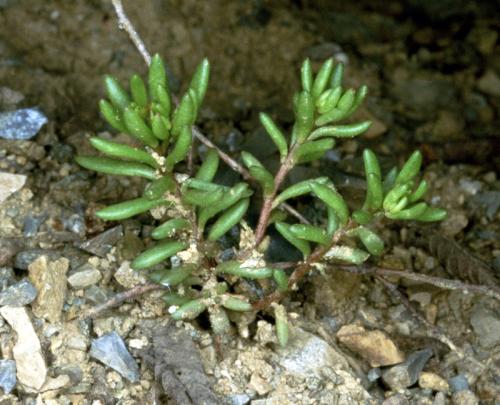
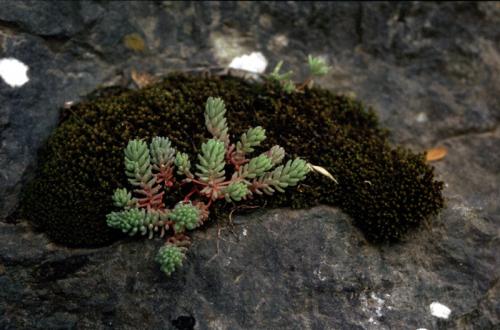
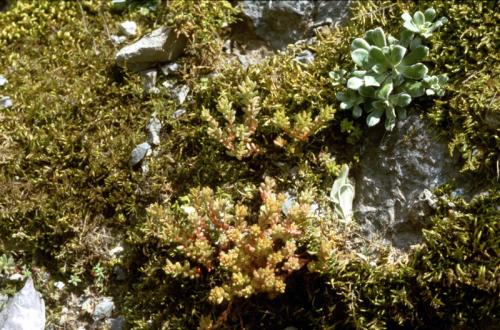
Photos Ray Stephenson
The same in cultivation :
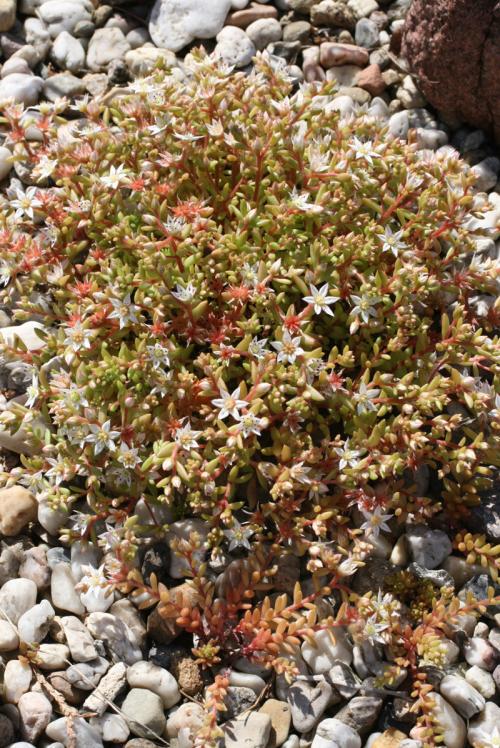
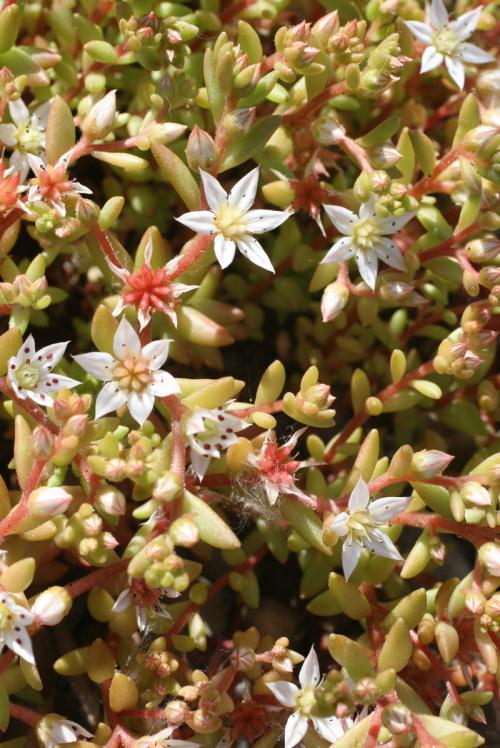
Photos Meinolf Stützer
Sedum hispanicum grows at the highest spots in Corfu :
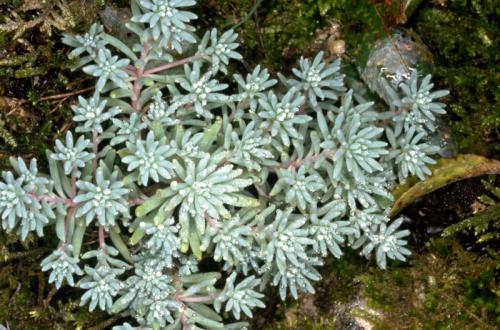
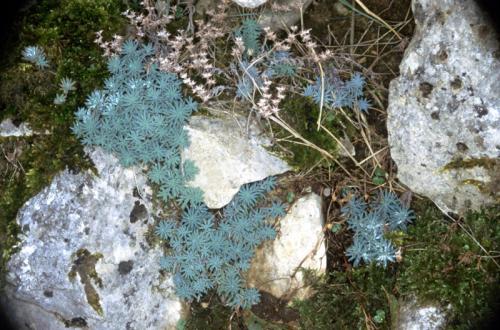
Sedum hispanicum on Lefkada :
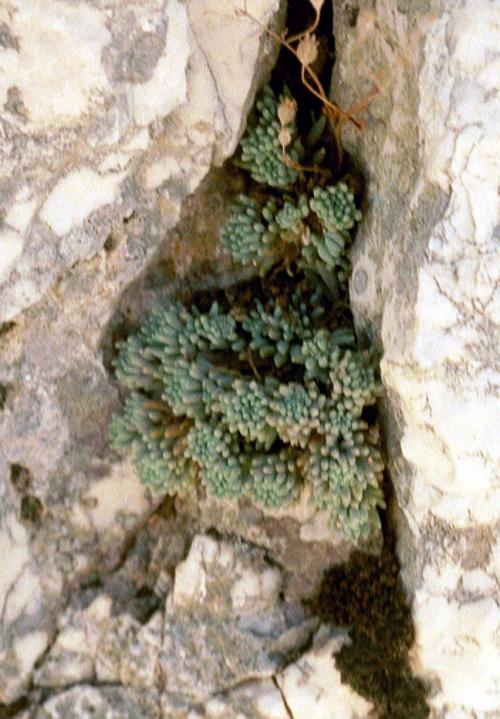
Sedum hispanicum on the Greek mainland near Kozani :
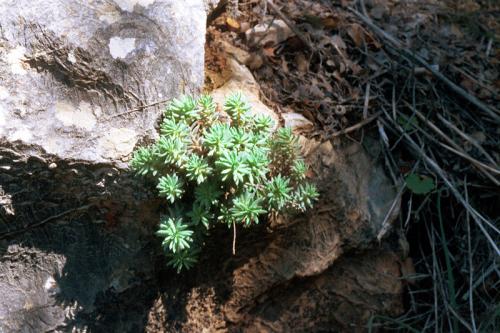
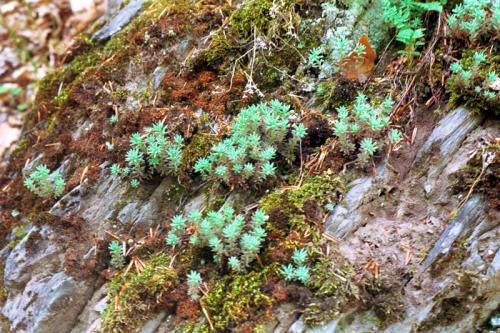
Photos Ray Stephenson
S. hispanicum in Bulgaria :
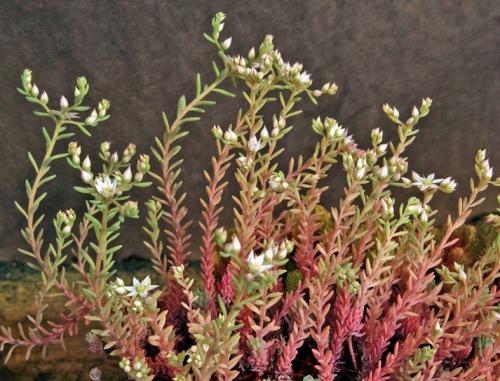
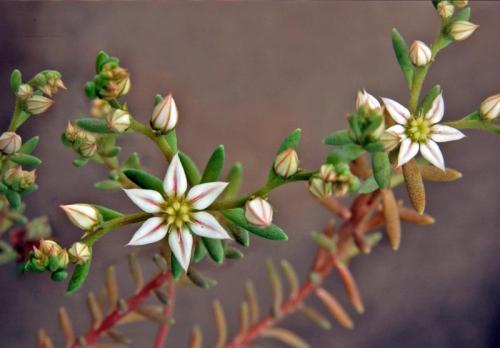
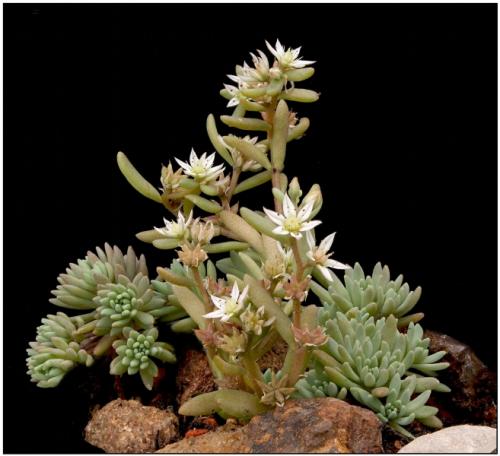
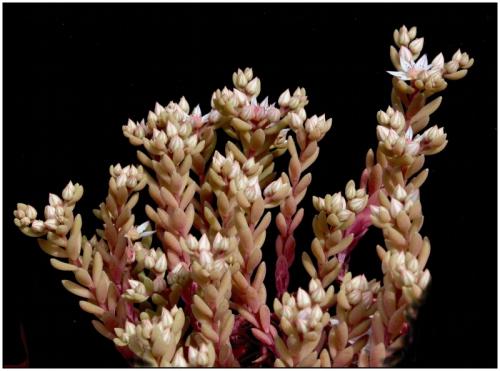
Photos Jens Kumke